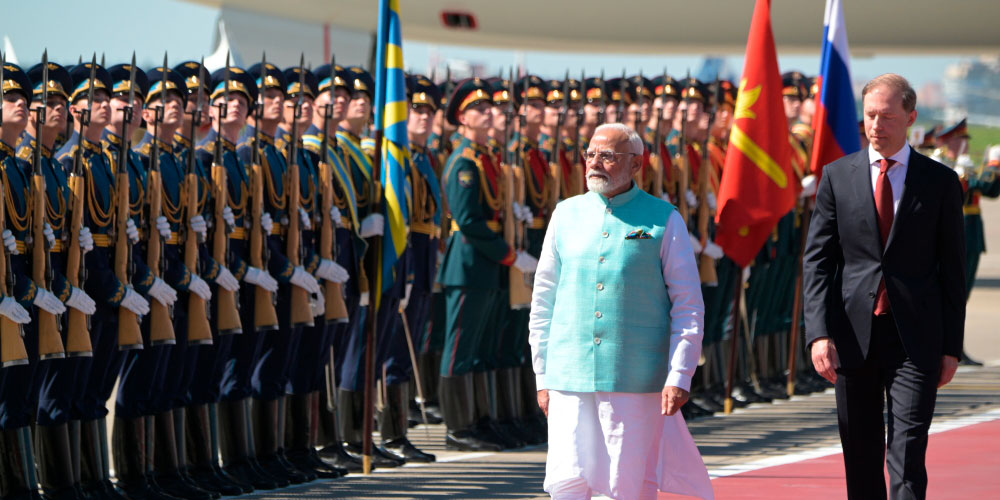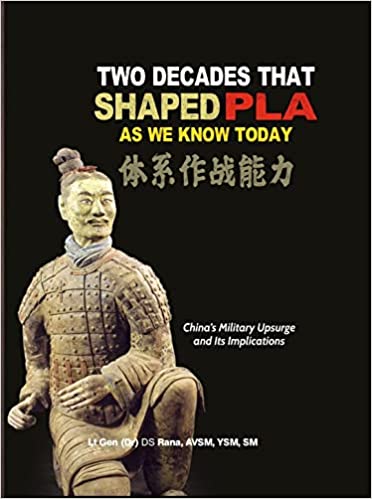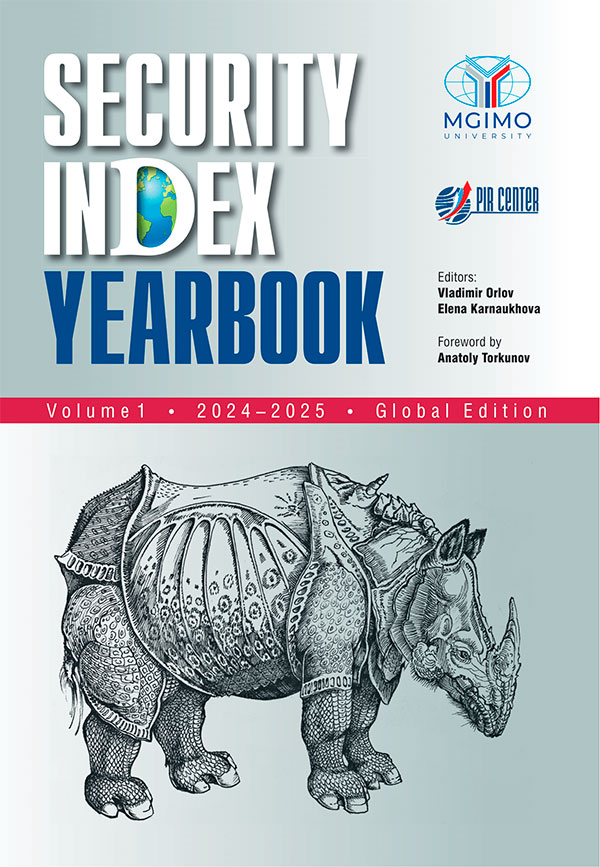Three challenges act as an impediment to Eurasian connectivity. First, there are geopolitical risks that hamper connectivity projects. India’s bilateral concerns with China and a lack of consensus regarding the borders led to strained relations. This partially explains why New Delhi remained among the few countries in Asia that did not join the BRI. Another reason can be pointed at the China-Pakistan Economic Corridor, a part of the BRI that traversed through contested territory claimed by India. New Delhi’s concerns with Beijing and Islamabad resulted in a lack of long-term economic cooperation. Further, the South Asian region has the poorest connectivity in the world. Despite increasing tourism, business interest remains low. Further concerns emerge regarding the strategic stability of Eurasia, the Nagorno-Karabakh conflict, and the post-conflict restoration of Afghanistan. Additionally, in the case of the INSTC, despite the impetus, it took over 23 years to begin trial runs because of US sanctions on Iran. Also, even on the Eastern Maritime Corridor (EMC), the scale of operations is low, and firms continue to use the Mumbai — St. Petersburg Sea Route.
Second, there are constraints in the creation of an alternative geoeconomic order, caused externally because of the threat of Western sanctions. Regardless of increasing demands for the use of national currencies across Eurasia, and the creation of alternative payment systems, the threat of secondary sanctions act as a serious impediment. Creating a new payment system is not easy and will have to evolve, with states needing to agree on standards and codes, which will not be easy in the short term. Third, logistical concerns persist in throwing a spanner into the works; for instance, in the case of the Northern Sea Route (NSR), even though there is strong political will for cooperation, the number of capable icebreakers is insufficient. Other concerns, such as the influx and shortages of shipping containers, can cause issues in multi-modal transit corridors. Thus, addressing these concerns requires strong political will and capacity among partners, which at times is absent.
In recent years, connectivity in Eurasia has sparked considerable interest in global geoeconomics. With centers of power shifting to Asia, a political-economic shift has been taking place in Eurasia as countries increasingly invest in fostering trade, investment, and cooperation. Initiatives like the INSTC—in addition to corridors such as the NSR and the Eastern Maritime Corridor, under the flag of the Greater Eurasian Partnership—have strengthened integration and challenged the Western-led world order. Despite progress, challenges remain, including geopolitical tensions, border disputes, and sanctions. Thus, building an alternative geoeconomic framework requires financial and political coordination. Nevertheless, the continued push for connectivity highlights its strategic importance. With cooperation and pragmatic diplomacy, Eurasia can shape a more resilient and interconnected future in an increasingly multipolar world.
Introduction
In the 34 years since the dissolution of the Soviet Union, the global geoeconomic order has seen considerable shifts. The post-1990 economic order came with significant promise. Increasing economic convergence and global integration were observed during the period of rapid globalization in the 1990s to the end of the global financial crisis in 2008. However, the second decade of the 21st century was but a trailer to the times of economic upheaval ahead, with tariff wars, sanctions, increasing protectionist measures, and supply chain disruptions dominating global economic discourse. However, it was during the same decade that greater emphasis was laid on expediting the completion and operationalization of existing corridors and the creation of new ones. Interestingly, connectivity projects from the Global South started to outnumber the projects from Global North countries. This was mainly because of three reasons: first, the growing demand and economic growth in the Global South and the developing world, the number of middle and regional powers increasing within the system, and the fragmenting of the rules-based order paved the way for a multipolar world. Resulting in a growing impetus for connectivity, which can be reflected in the increasing multilateral and plurilateral connectivity projects and trade corridors, such as the International North–South Transport Corridor, Asia-Africa Growth Corridor, Eastern Maritime Corridor, and the Northern Sea Route. Together, these corridors are the umbilical cord of the multipolar world order and arguably focus on a conducive re-globalization of the world. [1]
Similarly, the Eurasian region has witnessed these trends since the 1990s; Asian economies saw a rapid take-off in the 1990s, ASEAN and Gulf countries, as well as India and China, saw an economic boom at the end of the 1990s, while the Russian economy grew rapidly. As the years passed, a similar phenomenon could be observed in Central Asia, the Caucasus, and South Asia, resulting in a major shift in international politics; the economic center of gravity was shifting eastward as supply chains were reorienting towards Asia. The result: a shift towards a multipolar world order. The following article looks at the evolution of 21st-century Eurasian connectivity and the geopolitical and geoeconomic shifts that have resulted in the creation of new corridors emanating from the Global South, particularly Asia. With these new corridors, connectivity emerged as a panacea for regional actors whose latent power increased in recent years. Due to this, the nature of bilateral relations among countries in Eurasia changed, and with the political-economic convergences taking place, the economic pillars in cooperation bolstered.
Eurasian Connectivity
There are multiple interpretations of the term “Eurasia,” as the interpretation varies according to time and space. However, this article will veer away from the traditional understanding of Eurasia coined by Nikolai Danilevsky and understand Eurasia from a 21st-century perspective. Mainly, the region will be looked through the lens of connectivity—Russia’s Greater Eurasian Partnership—which emphasizes the harmonization of Eurasian connectivity by linking projects such as the Eurasian Economic Union, Belt and Road Initiative, Shanghai Cooperation Organization, Association of Southeast Asian Nations, and the International North–South Transport Corridor (INSTC).
Connectivity, in the case of Eurasia, has developed in light of the dissonance with the Western-led economic order, which had barriers to entry and was not in the interest of the needs of the developing world. The first major connectivity project was the INSTC, a 7,200 km long multi-modal transit corridor connecting the Indian port of Mumbai to St. Petersburg via Iran and Azerbaijan. The corridor aimed to mitigate the volatility in the Middle East by bypassing the strait of Hormuz and Suez Canal, along with the prospects of increasing trade between India and Russia. The corridor aims to reduce transit time by 40% and costs by 30%. The INSTC is India’s gateway to Eurasian trade and pivotal to India’s connect Central Asia strategy. [2] The success of the INSTC also has regional security implications; increasing trade along the INSTC can result in increased business participation, and strong governance mechanisms can create employment opportunities, increase trade, and significantly reduce radicalism.
Along with the INSTC, the Eastern Maritime Corridor connects the port of Vladivostok with the Eastern Indian ports of Chennai, Pardwip, and Vishakapatnam. Both countries have re-operationalized the Soviet-era trading route. This comes in light of India’s interest in building up its engagements with the Russian Far East. New Delhi has pledged credit worth $1 billion for investing in the Russian Far East. Indian firms, especially in the pharma sector, have expressed interest in setting up industries in the Far East. Further. As proof, a major Indian firm—the Oil and Natural Gas Corporation (ONGC)—continues to operate in the Sakhalin project. New Delhi’s approach in Asia-Pacific reflects a degree of strategic flexibility, where it maintains its core interests by ramping up cooperation with Russia and is also a part of multilateral organizations such as the QUAD. Thus, connectivity projects act as a catalyst for increasing investments.
Emerging Trends in Eurasian Transit Trade and Logistics
Connectivity in CIS states has improved significantly, new economic realities have resulted in Central Asian countries reaching new heights, and the complex interdependence has resulted in states resolving issues bilaterally. Recently, Kyrgyzstan and Tajikistan concluded their border agreement to their resolve border and interstate river water jurisdiction disputes. The damming of the Amu and Syr Darya rivers have used better mechanisms in comparison to the past, as a result of economic concerns gaining more relevance. Key projects such as the construction of the China-Kyrgyzstan-Uzbekistan railway line, the trans-Iran corridor from Uzbekistan to Iran, the trans-Kazakhistan railway, and the Khorgos logistics hub aim to boost regional connectivity and trade. Further, Kazakh President Kassym Jomart Tokayev has expressed interest in strengthening its position as a key transit hub in Eurasian logistics.
Because of these changes, the nature of relationships has begun to change, as actors in Eurasia rely on pragmatism in cooperation projects. Such is most evident in India-Russia relations, the bedrock being their military-technical partnership. [3] However, in the second decade of the 21st century, economic cooperation between the two nations improved considerably. At the beginning of the conflict in Ukraine, a new energy pillar was emboldened in the Indo-Russia relations. With the introduction of sanctions, India became the conduit for Russian crude oil to the rest of the world. India’s bilateral trade with Russia surged from $12 billion in 2021 to $65 billion in 2024. Even with the increase in sanctions, both countries have created bilateral mechanisms to continue trade. Russian insurance giants such as Ingosstrakh and AlfaStrakhovanie provided insurance to Indian crude imports from Russia. Interestingly, rapid de-dollarization occurred in New Delhi’s trade with Russia as both countries settled payments in rupees, dirhams, yuan, and other non- western currencies. Thus, significant growth has been observed in Eurasian trade due to the increasing investment in logistics, alternative banking mechanisms, and plans for the digitalization of currencies. Furthermore, in recent years, BRICS has played an important role in setting the discourse for the creation of an alternative world order. However, drawing blueprints to realize such a vision will require significant effort from all stakeholders and here, several challenges remain.
Challenges
Three challenges act as an impediment to Eurasian connectivity. First, there are geopolitical risks that hamper connectivity projects. India’s bilateral concerns with China and a lack of consensus regarding the borders led to strained relations. This partially explains why New Delhi remained among the few countries in Asia that did not join the BRI. Another reason can be pointed at the China-Pakistan Economic Corridor, a part of the BRI that traversed through contested territory claimed by India. New Delhi’s concerns with Beijing and Islamabad resulted in a lack of long-term economic cooperation. Further, the South Asian region has the poorest connectivity in the world. Despite increasing tourism, business interest remains low. Further concerns emerge regarding the strategic stability of Eurasia, the Nagorno-Karabakh conflict, and the post-conflict restoration of Afghanistan. Additionally, in the case of the INSTC, despite the impetus, it took over 23 years to begin trial runs because of US sanctions on Iran. Also, even on the Eastern Maritime Corridor (EMC), the scale of operations is low, and firms continue to use the Mumbai — St. Petersburg Sea Route.
Second, there are constraints in the creation of an alternative geoeconomic order, caused externally because of the threat of Western sanctions. Regardless of increasing demands for the use of national currencies across Eurasia, and the creation of alternative payment systems, the threat of secondary sanctions act as a serious impediment. Creating a new payment system is not easy and will have to evolve, with states needing to agree on standards and codes, which will not be easy in the short term. Third, logistical concerns persist in throwing a spanner into the works; for instance, in the case of the Northern Sea Route (NSR), even though there is strong political will for cooperation, the number of capable icebreakers is insufficient. Other concerns, such as the influx and shortages of shipping containers, can cause issues in multi-modal transit corridors. Thus, addressing these concerns requires strong political will and capacity among partners, which at times is absent.
Way Forward
In recent years, connectivity in Eurasia has sparked considerable interest in global geoeconomics. With centers of power shifting to Asia, a political-economic shift has been taking place in Eurasia as countries increasingly invest in fostering trade, investment, and cooperation. Initiatives like the INSTC—in addition to corridors such as the NSR and the Eastern Maritime Corridor, under the flag of the Greater Eurasian Partnership—have strengthened integration and challenged the Western-led world order. Despite progress, challenges remain, including geopolitical tensions, border disputes, and sanctions. Thus, building an alternative geoeconomic framework requires financial and political coordination. Nevertheless, the continued push for connectivity highlights its strategic importance. With cooperation and pragmatic diplomacy, Eurasia can shape a more resilient and interconnected future in an increasingly multipolar world.
1. Bruno Macaes, The Dawn of Eurasia: On the trail of the New World Order. Penguin, London, 2018.
2. Uma Purushothamam, and Nandan Unnikrishnan, “A tale of many roads: India’s approach to connectivity projects in Eurasia,” India Quarterly, 75(1) 69-86, 2019
3. Nandan Unnikrishnan and Nivedita Kapor, “India and Major Power: Russia,” Observer Reserarch Foundation, August 07, 2019. https://www.orfonline.org/expert-speak/india-and-major-powers-russia-54183







